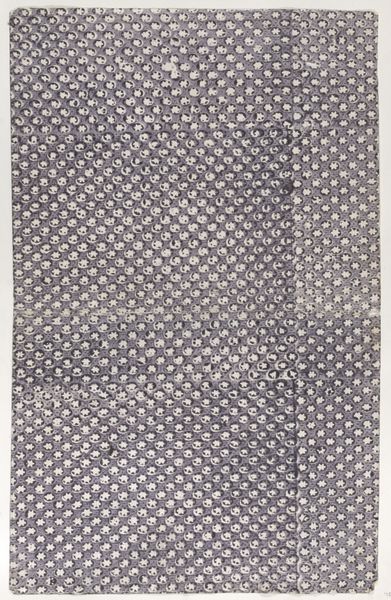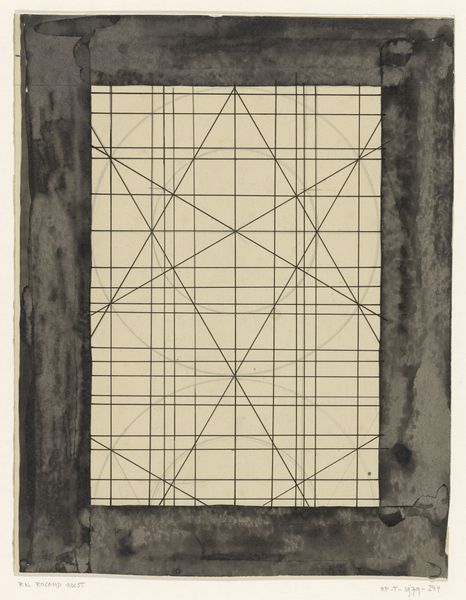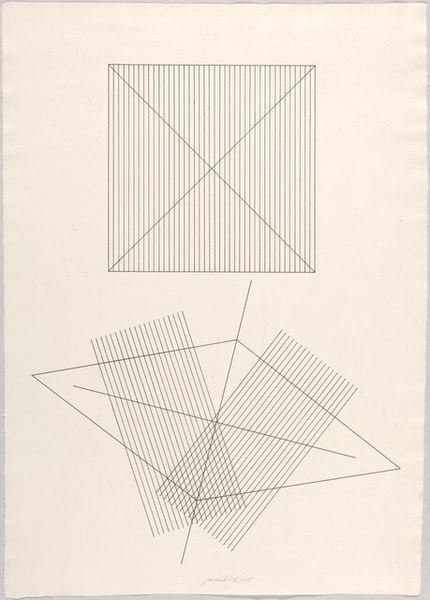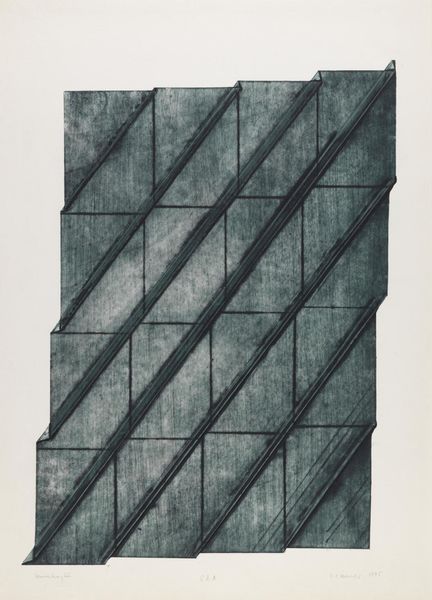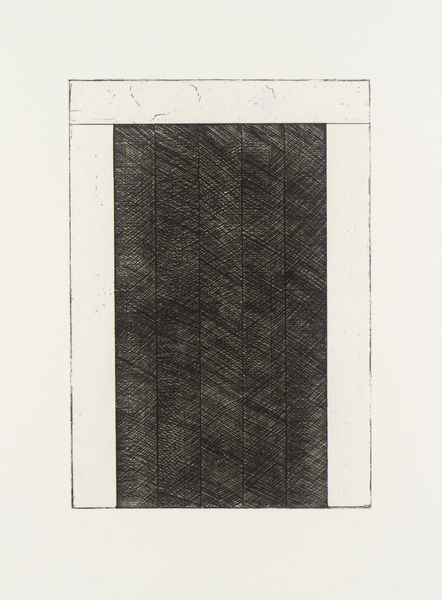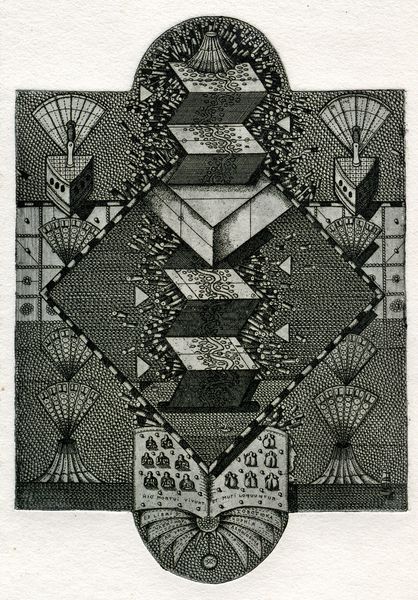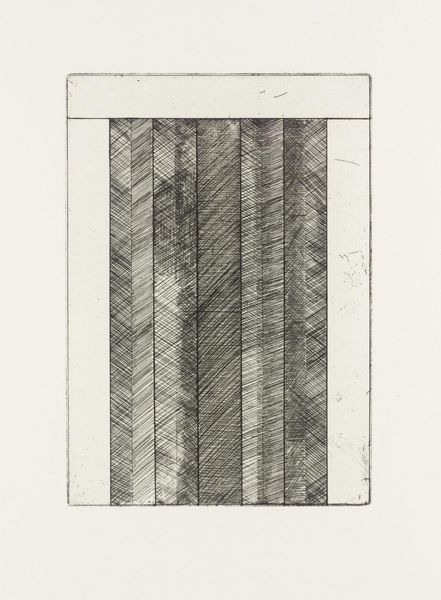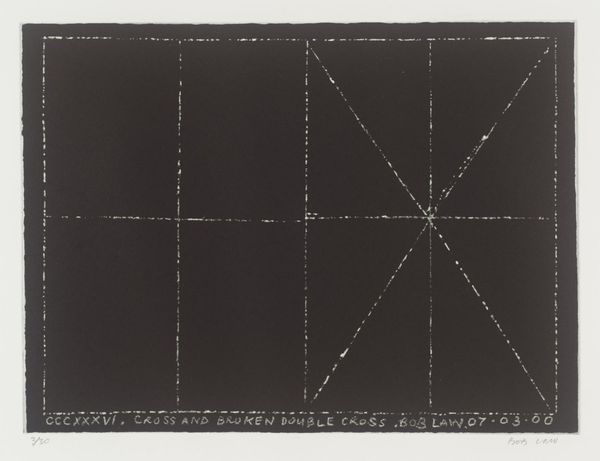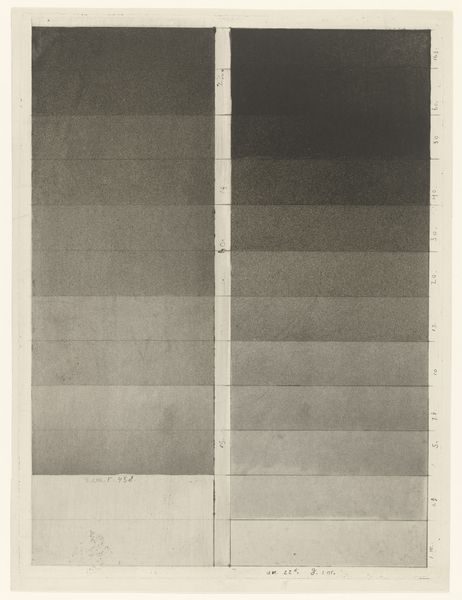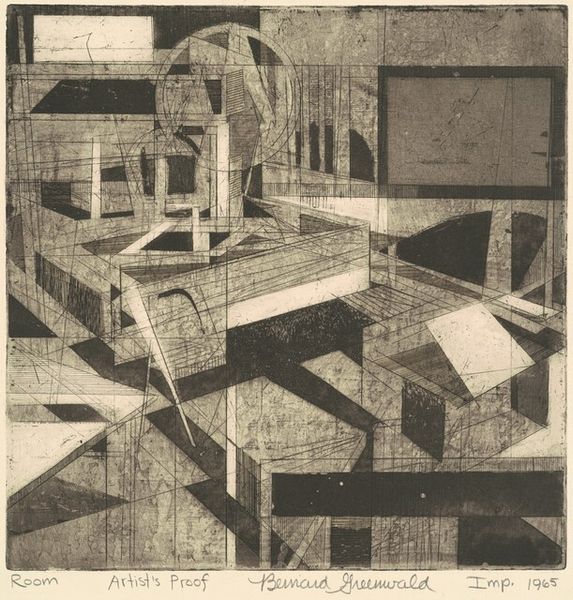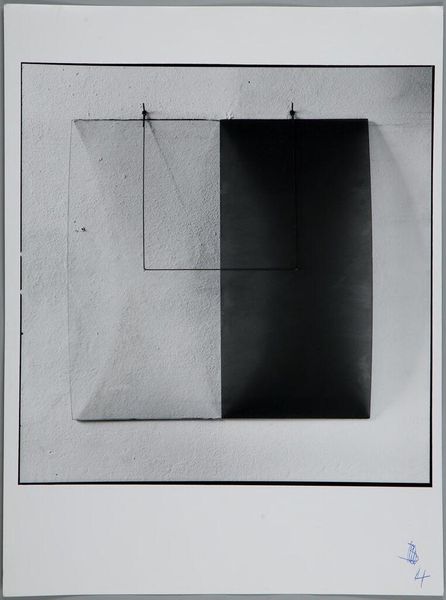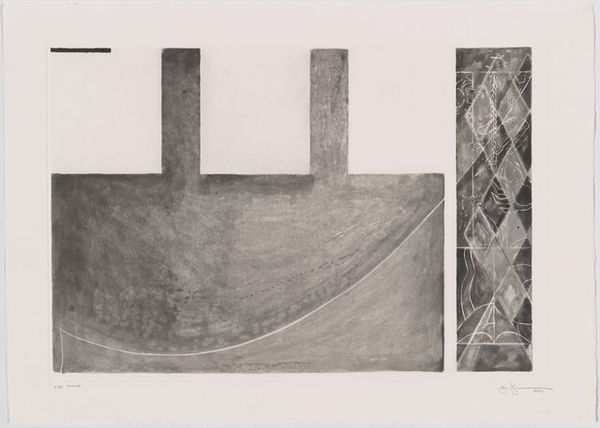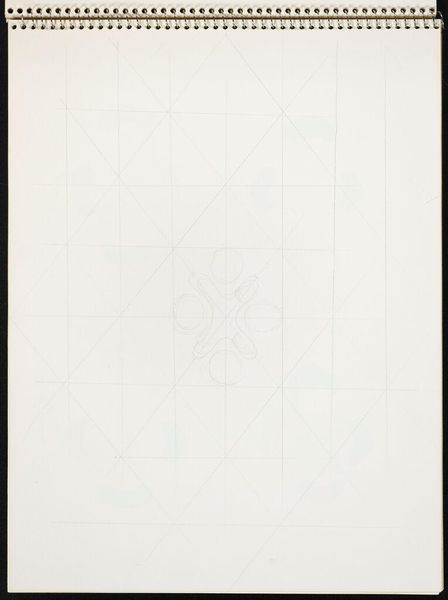
drawing
#
drawing
#
organic pattern
#
geometric
#
abstraction
#
intricate pattern
#
pattern repetition
Dimensions: 762 x 521 mm
Copyright: National Gallery of Art: CC0 1.0
Editor: This is Jennifer Bartlett’s "Day and Night" from 1978, a mixed media work incorporating drawing and printmaking techniques. The intricate, almost obsessive, patterns evoke a feeling of structured chaos. What underlying themes or concepts do you believe Bartlett is exploring through the repetition and juxtaposition of these patterns? Curator: I think Bartlett is using pattern and repetition to question the perceived boundaries between domesticity and art, high and low art, masculine and feminine. Think about the Pattern and Decoration movement – its rejection of minimalist austerity in favor of ornamentation, and its reclaiming of traditionally feminized crafts like quilting. Editor: So, you’re saying it’s a political act, embracing these so-called 'feminine' patterns? Curator: Absolutely! But also, consider the grid itself. Its seemingly objective structure is constantly undermined by Bartlett’s variations. It reflects a feminist critique of the supposed neutrality of the male-dominated art world. Each slightly different square challenges the notion of a single, correct viewpoint. What narratives do these variations tell you? Editor: That’s a compelling idea. It almost feels like Bartlett is dismantling a system, cell by cell. The drawing feels like both meticulous planning and uncontrolled growth within set boundaries. I am curious, how does the use of the house image speak to themes of the personal and political? Curator: The house could symbolize the confinement of domestic space, or conversely, the potential for creative expression within it. By using such a basic, universal image within this complex system of patterns, she could be suggesting that even the most personal and seemingly simple elements are subject to social and political forces. Are you seeing the implications between Bartlett’s use of pattern and its reflection on gendered identity within art history? Editor: Yes, it highlights the ongoing conversation of societal impacts within art history and the significance of female perspective, dismantling restrictive constructs in various contexts. Thanks for expanding my understanding. Curator: It’s about seeing how even seemingly abstract formal choices are deeply rooted in personal experience and cultural context, thus reflecting back and furthering new contexts.
Comments
No comments
Be the first to comment and join the conversation on the ultimate creative platform.
